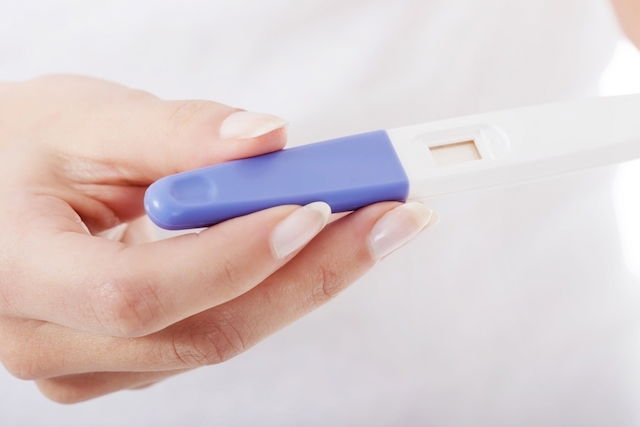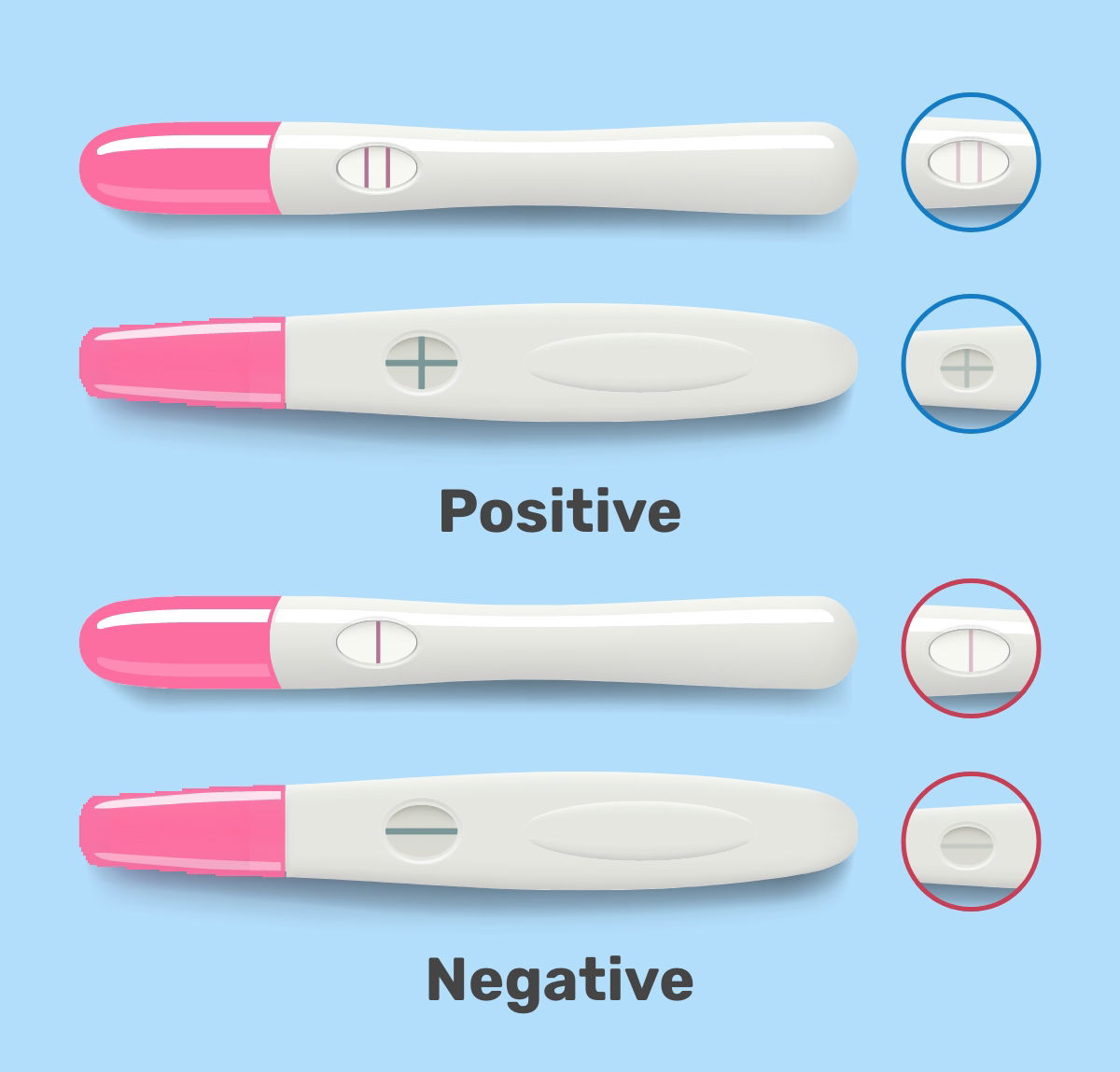An home pregnancy test that is purchased over-the-counter can be very accurate, as long as it is completed correctly. It should be done after a missed period, and can be done as soon the first late day.
This type of test looks for the presence of beta-HCG hormone in the urine, which will only be present during pregnancy. The beta-HCG level will continue to rise in the first weeks of pregnancy. Therefore, a positive pregnancy test means that the woman is producing beta-HCG, and, if present, her chances of being pregnant are high.
It is important to wait to complete a home pregnancy test until your period is late. Not waiting can result in a false negative, as the hormone level is still low at this point and may not be detected in the urine.

When to take
A home pregnancy test can be done after the first day that a period is late. If your home pregnancy test is negative, but your period has still not arrived, and if you have other pregnancy-like symptoms (like pink discharge or sore breasts), you should repeat a test in 3 to 5 days. The beta-HCG hormone may need a few days to rise to a detectable level.
Currently, there are some pregnancy tests that you can take earlier that may detect a pregnancy 6 days before your missed period. However, if your early pregnancy test shows a negative result, you should wait to repeat it until the first day of your missed period.
How to take a test at home
Ideally, a pregnancy test should be done using the first urine of the day, as this will be the most concentrated urine you produce, and therefore will have the highest quantity of beta-HCG hormone. However, the test will still be accurate at a later time of the day if you wait at least 4 hours to urinate.
To complete a home pregnancy test, you should follow the following steps:
- Urinate into a clean recipient
- Remove the dipstick lid and soak the absorbent end in the urine
- Wait 5 seconds (or however long the directions indicate) and remove the stick
- Place the stick on a flat surface, like a table
You should wait 1 to 5 minutes for the result to appear. (or however long the directions indicate).
It is important to remember that the instructions of different brands of pregnancy tests may vary, and therefore you should always read the product's specific instructions.
How to know the test is working
The test is working correctly as long as there is at least one line in the first 10 minutes of taking it. This first line, which can appear in a separate “control” window, is usually identified with with the letter “C”.
With digital tests, a control indicator may not be visible, and the test itself will usually report it is not working (by either showing an error code in the results window, or by not turning on at all).
No matter the type of test you opt for, if it is not working, you should repeat the pregnancy test using a new one.
How to know if it is positive or negative

Home pregnancy tests can report the following results:
- Two lines: positive result, which confirms pregnancy (even if the lines appear to be faint)
- One line: negative result, which means there is no pregnancy or that it is too early to confirm
- "+": positive result, which confirms pregnancy (this can also appear to be faint)
- "-": negative result, which means there is no pregnancy or that it is too early to confirm
Generally, after 10 minutes, the results of a pregnancy tests can be affected by external factors and can change, and therefore you should not rely on the results after this time frame.
False negative result
A pregnancy test can report a false negative result when the test is completed too early and the beta-HCG levels are still not sufficiently high to be detected in the urine. This will usually happen if the test is done before a late period.
False positive result
A false positive result occurs when a test reports a positive result, but then another test done at a later time shows a negative result. This usually happens with a spontaneous miscarriage, which is relatively common in the first weeks of pregnancy. Should this happen, you should see you doctor or OBGYN, especially if this has happened more than once. It may be a sign of fertility issues that may require intervention.
Online pregnancy test
If you suspect you are pregnant, you should look out for symptoms associated with pregnancy, like breast sensitivity and mild abdominal bloating. Report your symptoms below to assess your probability of pregnancy:
Can historical methods of detecting pregnancy work?
Historical methods for detecting pregnancy (like using a needle and thread, toothpaste, chlorine or toilet water) should not be utilized as these are not accurate.
To obtain a reliable result, you should complete an over-the-counter pregnancy test, or complete a blood test at a lab. Both of these tests assess your beta-HCG levels, which will confirm or rule out a pregnancy.
Can a man take a home pregnancy test?
If a man does a home pregnancy test with his own urine, there is a small possibility of getting a positive result. This indicates the presence of beta-HCG hormone in the urine, which is not associated with pregnancy, but instead with a serious health condition like cancer. In this case, you should see your doctor for assessment and to start treatment immediately.

